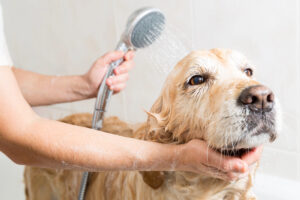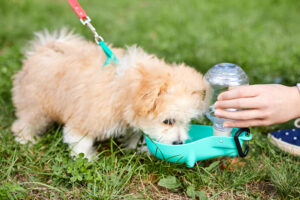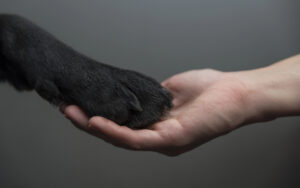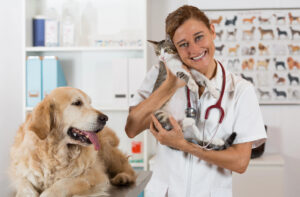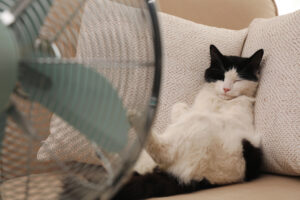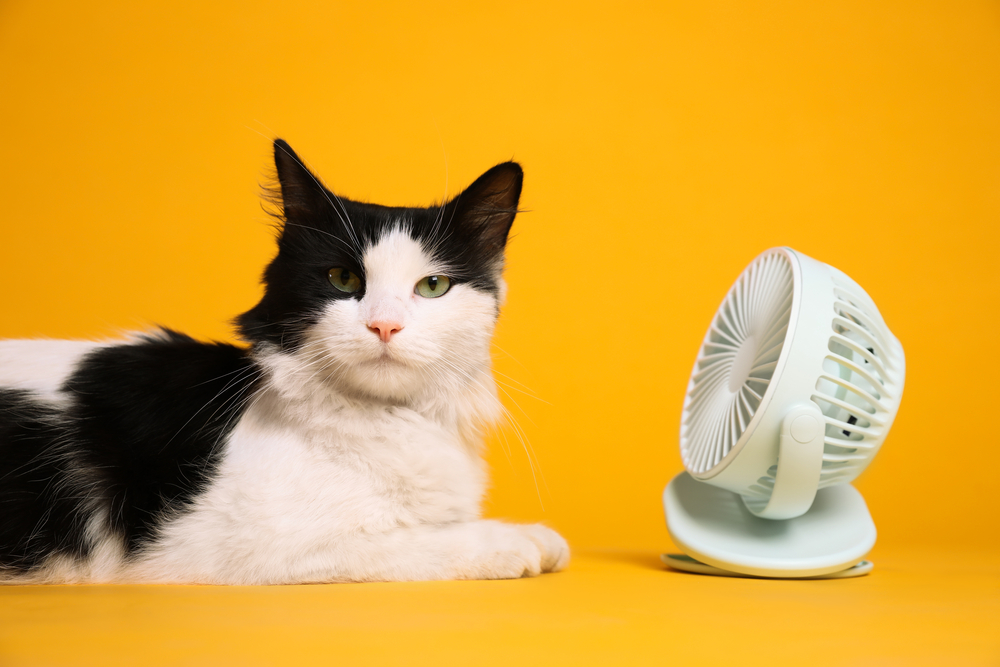
Can Cats Overheat in the Summer?
As cat owners, we prioritize the well-being of our feline friends, especially during the hot summer months. People often think that cats are less likely to get too hot than dogs, but this is not true. Find out about efficient cooling techniques to keep your cats safe, healthy, and happy throughout summer.

Boarding Clients!*Discount does not apply during holiday/peak rate periods.

Understanding How Cats Regulate Their Temperature
Cats don’t have as many sweat glands as people do, so they mostly keep their bodies cool by grooming themselves and sleeping in cool places. Panting is another way to cool down, but cats don’t do it as well as dogs do. Because of these restrictions, cats can get too hot when it’s hot outside or when they are moving a lot.
Recognizing the Signs of Overheating in Cats
Finding the signs of overheating early is very important for keeping your health in good shape. If you think your cat is too hot, here are some signs:
- Panting and Rapid Breathing: When cats are really hot, they pant. If your cat breathes quickly or with its mouth open, that’s a bad sign.
- Lethargy and Weakness: If a cat gets too hot, it might become very weak or sluggish.
- Increased Heart Rate: When a cat is too hot, their heart rate may go up a lot.
- Drooling and Salivating: Drooling a lot is a sign of being stressed out by the heat.
- Vomiting and Diarrhea: These signs show that the person is severely overheating and need immediate help.
- Bright Red or Pale Gums: Changing gum color can be a sign of being too hot.
- Confusion or Disorientation: Your cat might be suffering from heat exhaustion or heatstroke if it looks lost or has trouble walking.
Immediate Steps to Take if Your Cat is Overheating
If you see any signs that your cat is getting too hot, act quickly to cool it down:
- Move to a Cooler Area: Move your cat right away to a cool, shady, or air-conditioned room.
- Give Your Cat Water: Give your cat clean, cool water to drink. Get them to take small sips, but don’t make them drink.
- Cool Your Cat with Water: Use a damp cloth or towel to gently cool your cat by wiping their fur, especially on the belly, paws, and armpits. Do not use water that is very cold.
- Use Fans: Fans will help your cat stay cooler by moving more air around.
- Monitor Continuously: Keep a close eye on your cat to see if it shows any signs of being upset. If they don’t get better quickly, you should get help from a vet right away.

Preventive Measures to Keep Your Cat Cool
Keeping your cat from getting too hot is very important for its health in the summer. To keep your cat cool and comfortable, try these things:
- Provide Fresh Water: Make sure your cat can always get clean, cool water. You could use a water fountain to get people to drink.
- Create Cool Spaces: Place cool, shady areas around your house where your cat can hide. During the hottest parts of the day, keep the curtains closed.
- Air Conditioning and Fans: Keep the temperature inside cool with air conditioning or fans.
- Avoid High-Temperature Times: When it’s really hot outside, like between 10 a.m. and 4 p.m., keep your cat inside.
- Groom Regularly: Grooming your pet regularly gets rid of extra fur and keeps it from getting too hot. If your cat has long hair, you might want to get it trimmed this summer, but talk to your vet first.
- Cooling Products: To give your cat a cool place to lie down, use cooling mats or gel packs made for pets.
- Limit Activity: If it’s hot outside, keep your cat from getting too hot by limiting their activity.
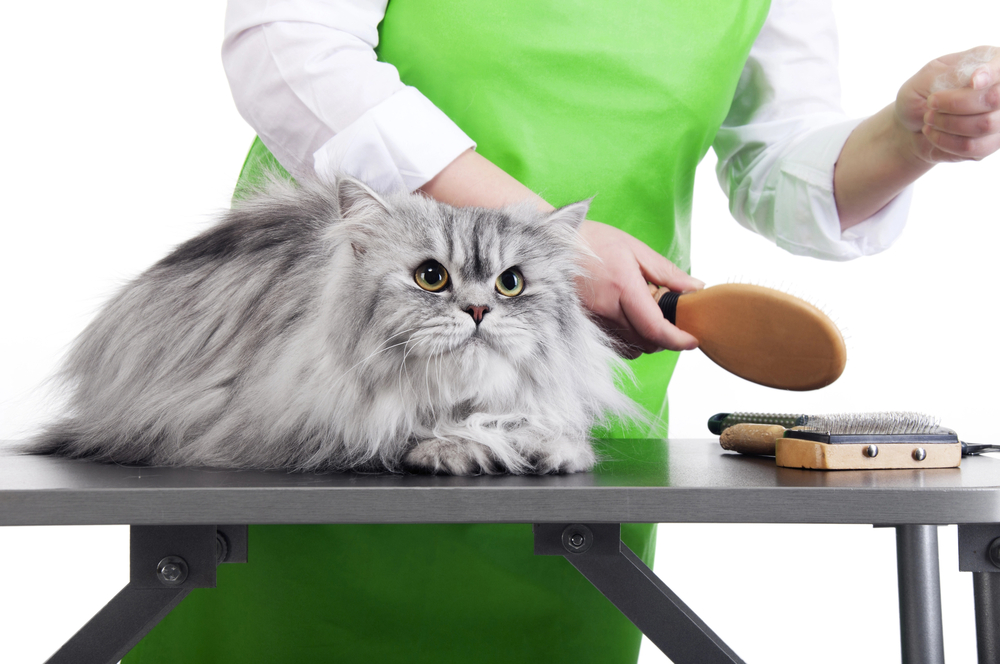
Special Considerations for Different Types of Cats
Because of their physical traits or health problems, some cats are more likely to get too hot:
- Brachycephalic Breeds: Persian cats and other cats with flat faces have narrow airways that can make them more likely to get too hot.
- Thick-Coated Breeds: In warm weather, breeds with thick fur, like Maine Coons, can get too hot more quickly.
- Senior Cats and Kittens: Kittens and cats that are older are less able to control their body temperature and are more likely to get sick from heat.
- Overweight Cats: Because it puts more stress on the body, extra weight can make you more likely to overheat.
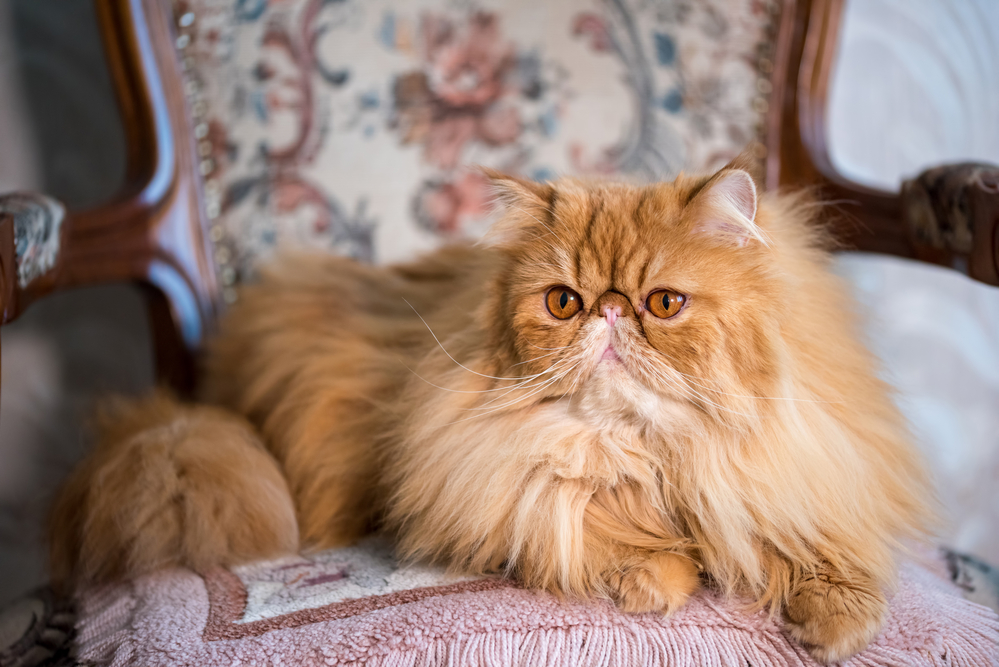
How to Measure Your Cat’s Temperature
If you keep an eye on your cat’s temperature, you can tell if they are getting too hot. For cats, the normal temperature in their rectal area is between 100.5 and 102.5 degrees Fahrenheit. If your cat’s temperature goes above 104 degrees, you need to take it to the vet right away.
First Aid Kit for Heat Emergencies
For heat emergencies, it’s important to have a well-stocked first aid kit. Think about adding:
- Digital Thermometer: For accurate temperature readings.
- Electrolyte Solutions: To help rehydrate your cat.
- Cooling Towels or Pads: For immediate relief from heat.
Encouraging Hydration
When it’s hot outside, it’s important to keep your cat hydrated. Here are some ideas:
- Fresh Water: To keep the water fresh, change it often.
- Wet Food: To add more moisture to your cat’s diet, give it wet food.
- Ice Cubes: You can keep your cat’s water bowl cool by adding ice cubes to it.
- Additions: Adding a little tuna juice or chicken broth (without salt or seasoning) to the water will make your cat want to drink more of it.
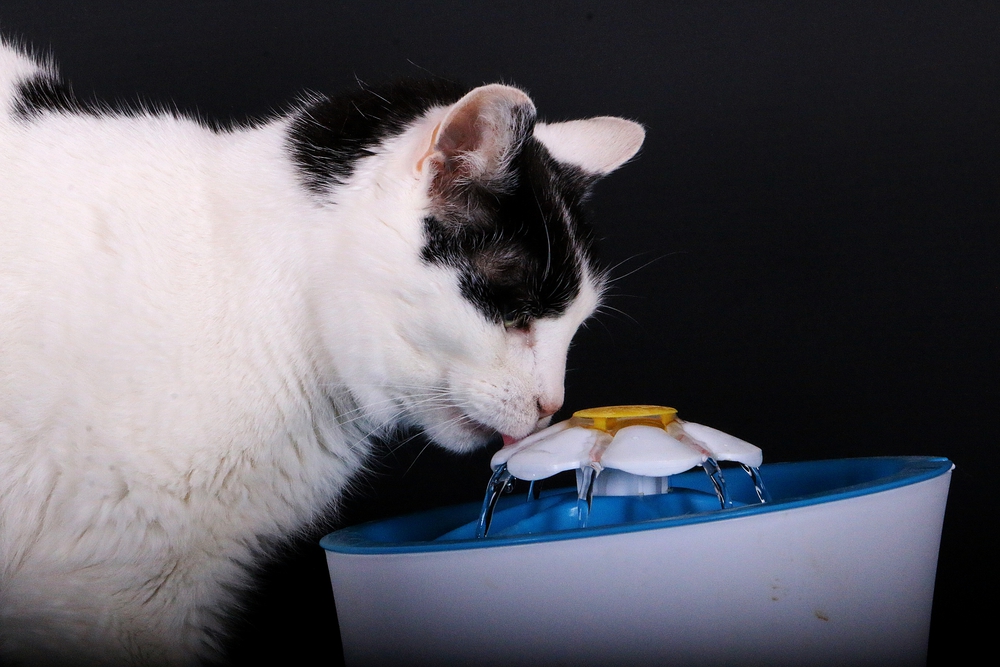
Travel Tips
When traveling with your cat in hot weather, you need to take extra care:
- Air Conditioning: Make sure the car has good air flow and is cool.
- Frequent Breaks: Stop by often to give your cat water and check on it.
- Portable Cooling Pads: For your cat’s comfort, put cooling pads in the carrier.
- Avoid Peak Heat: Plan your trip for when it’s cooler outside.

Post-Overheating Care
If your cat overheated, it’s important to give it the right care afterward:
- Rest: Give your cat a cool, quiet place to rest.
- Hydration: Keep giving them fresh water and watch how much they drink.
- Veterinary Follow-Up: Make an appointment with your vet to make sure there are no health problems that are still going on.
When to See a Vet
If your cat has severe symptoms like collapsing, having seizures, or not responding, you should take them to the vet right away. It is best to take your cat to the vet for a checkup even if it seems to be getting better.
Educating Yourself and Others
Educating and raising awareness are very important for keeping cats from getting too hot. Learn about the risks and tell other cat owners what you’ve learned. Through the summer, you can help keep your cat safe and healthy by knowing the signs of overheating and what to do about them.
Overall
It is possible for cats to get too hot in the summer, and owners need to know how to spot the signs and help their cats. Heat stress can be dangerous for cats, but you can keep them safe by taking precautions and keeping an eye on their health. Remember that if you’re not sure what to do, you should always talk to a vet to get the best advice for your cat’s needs.
Pay attention, keep your cat cool, and have a fun, safe summer with your cat. You can find more pet care tips and advice at Fon Jon Pet Care.




